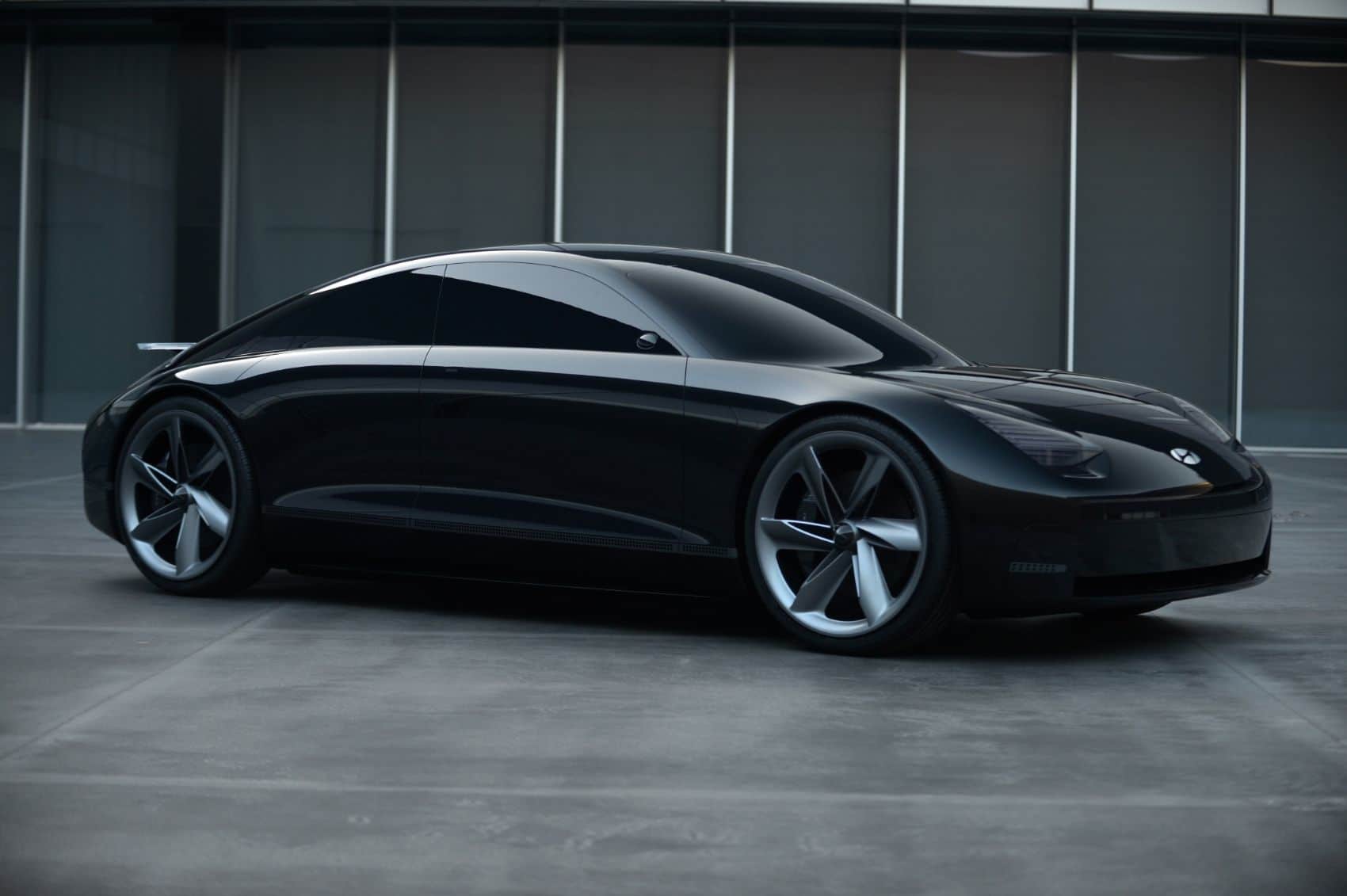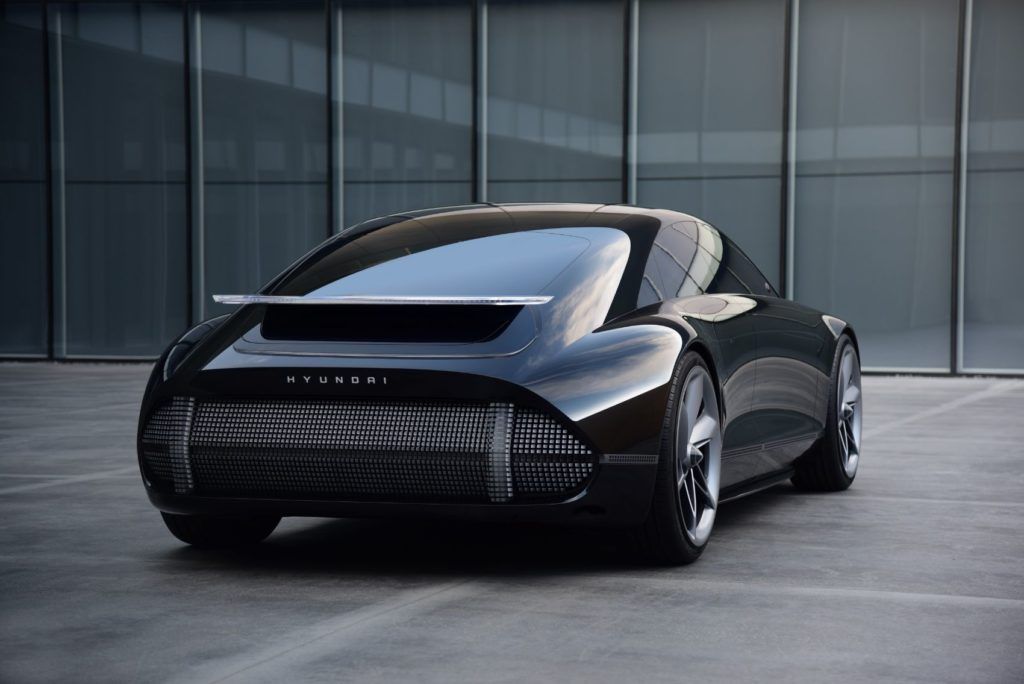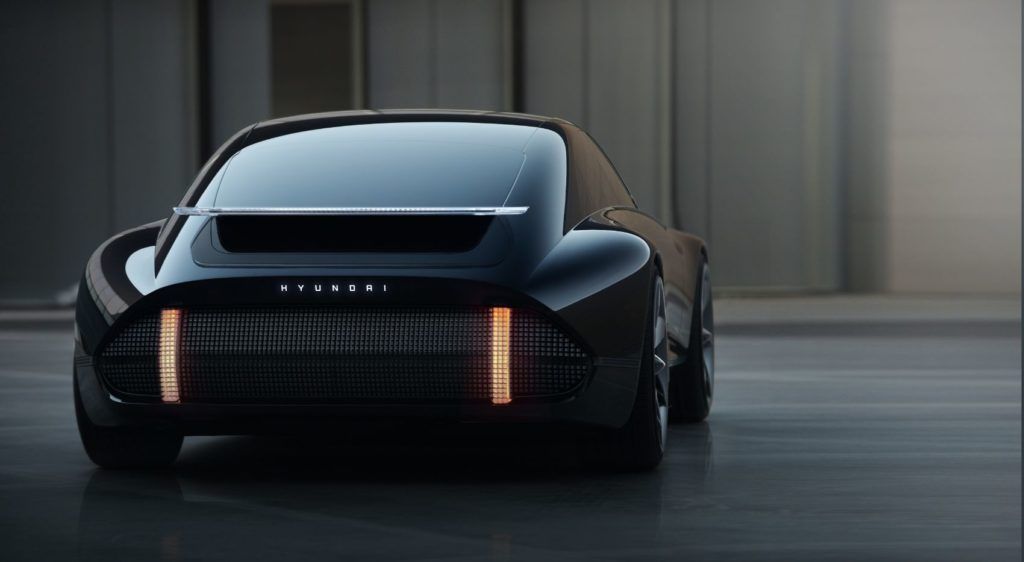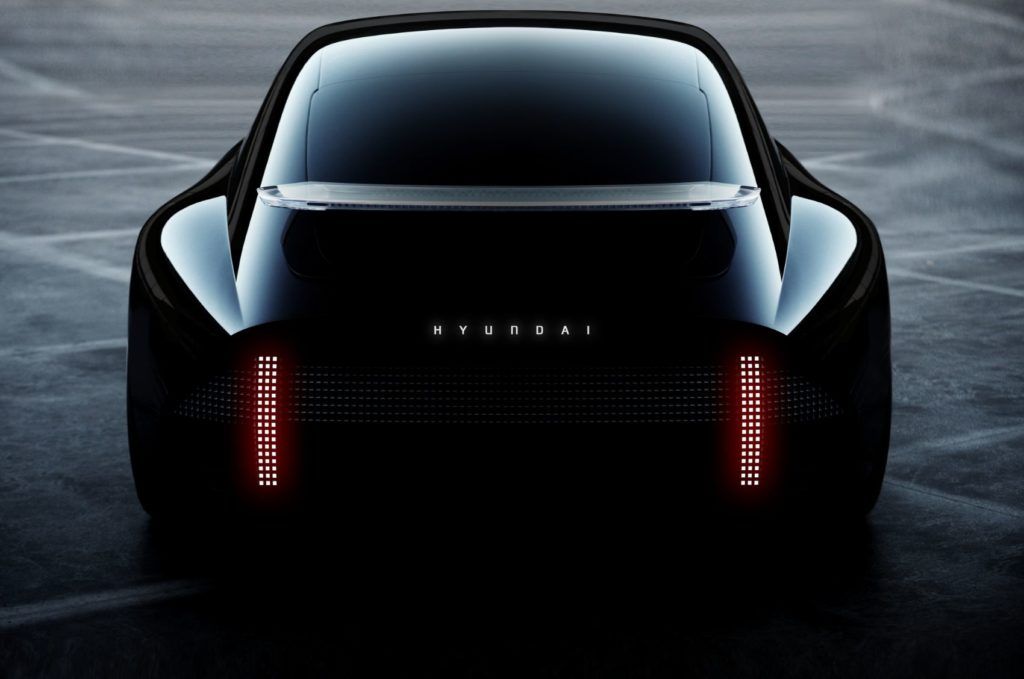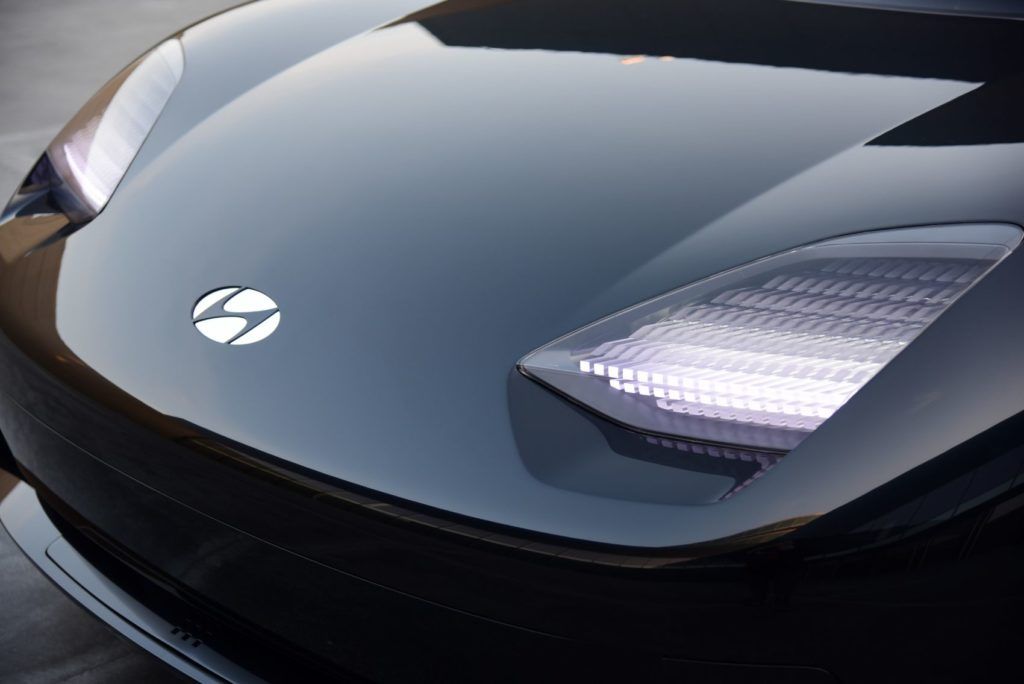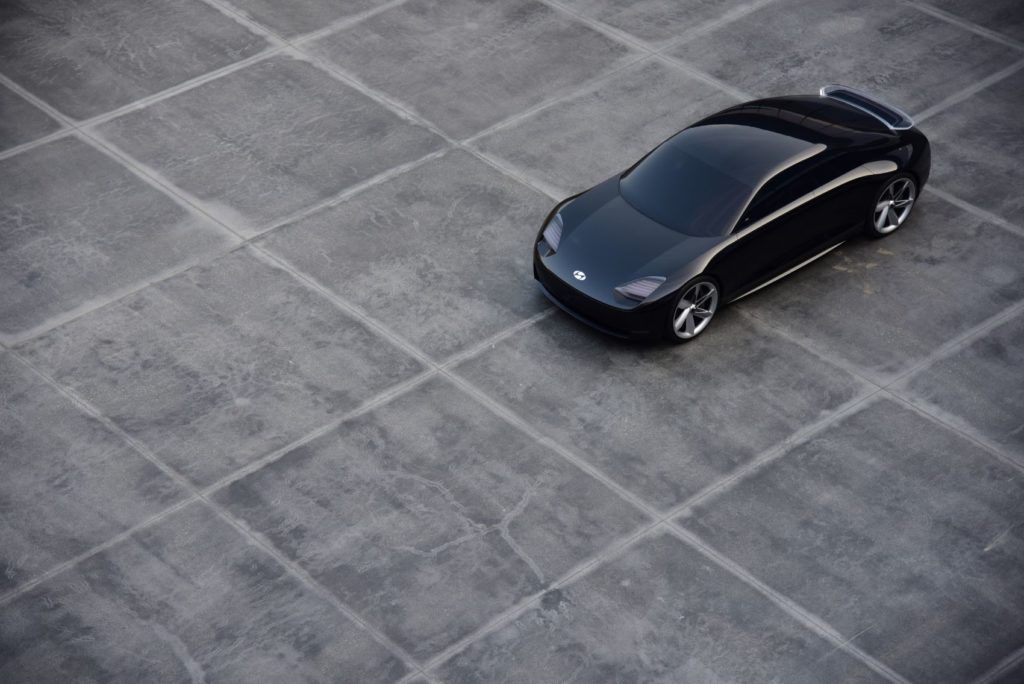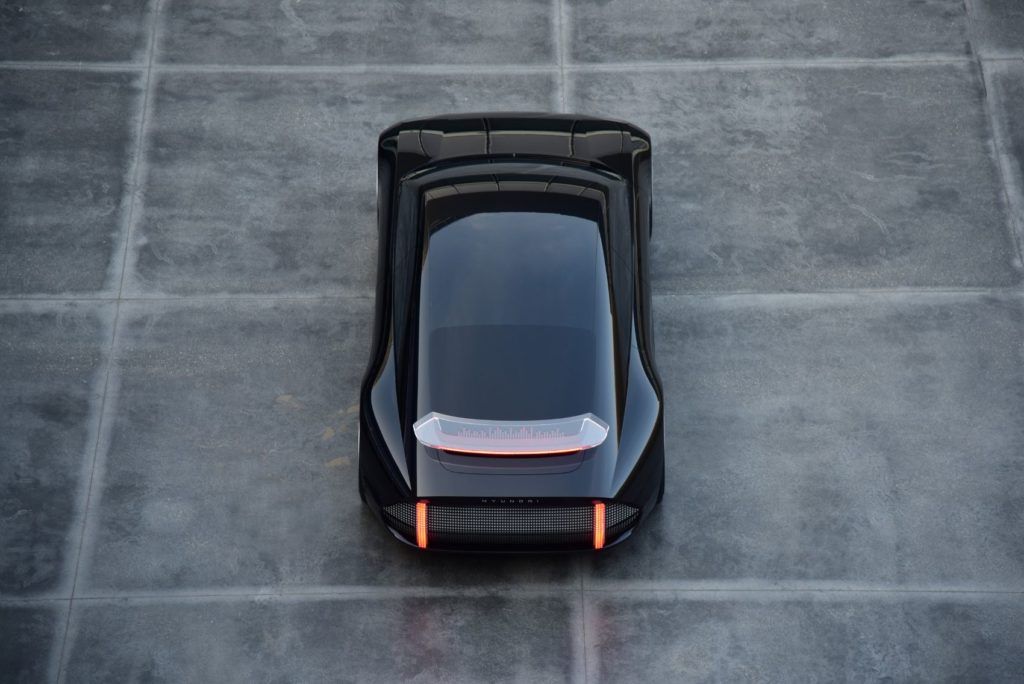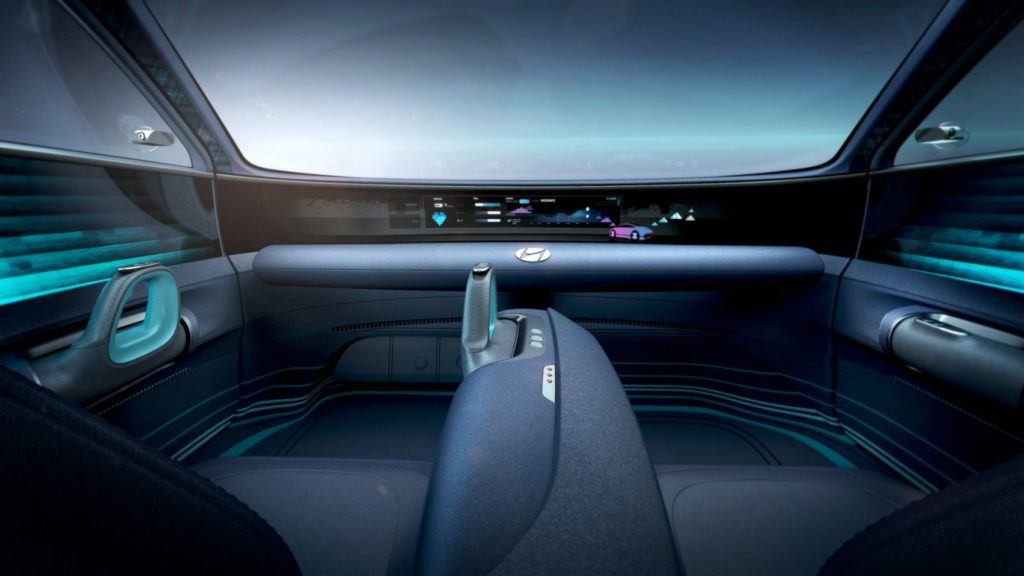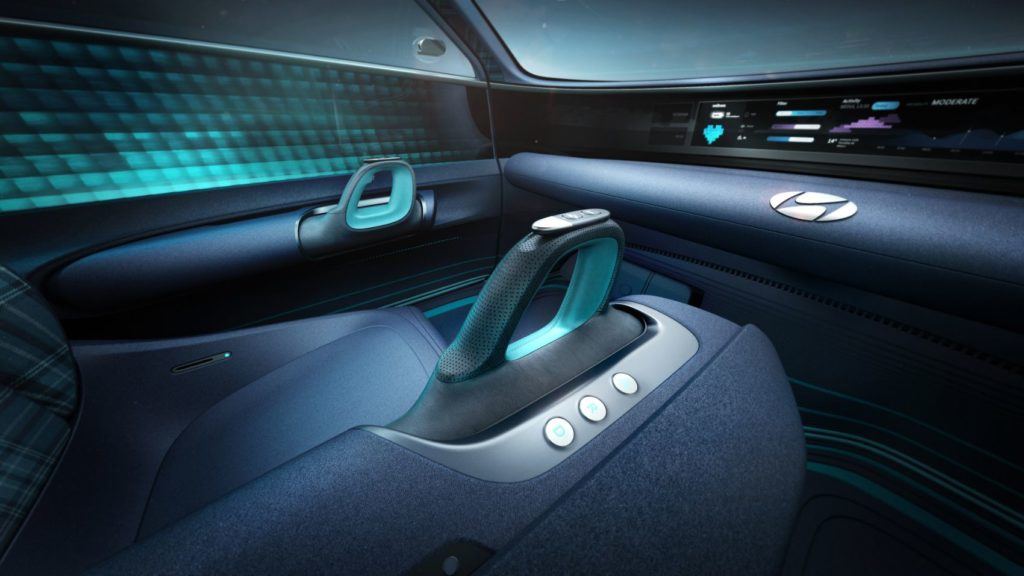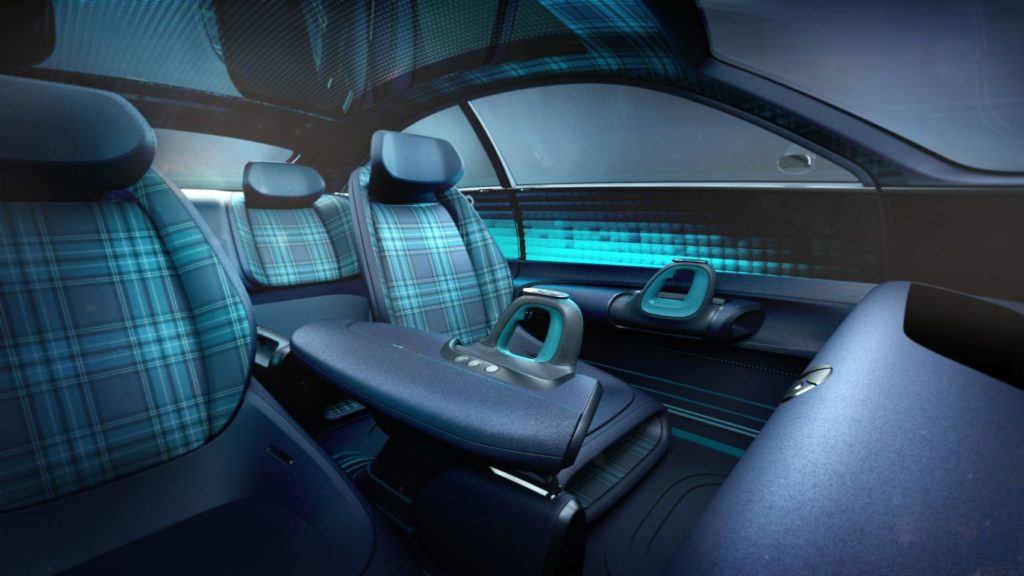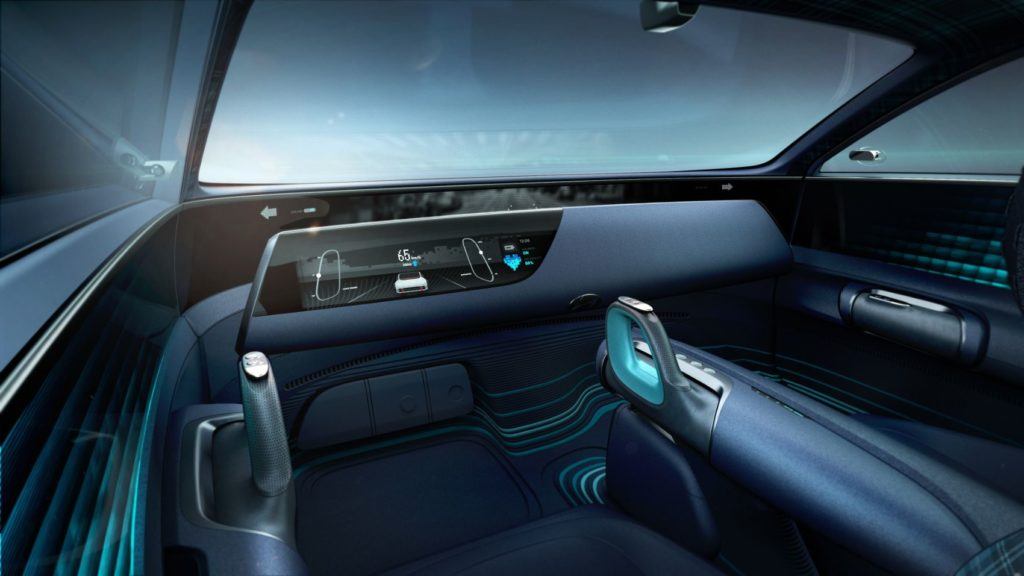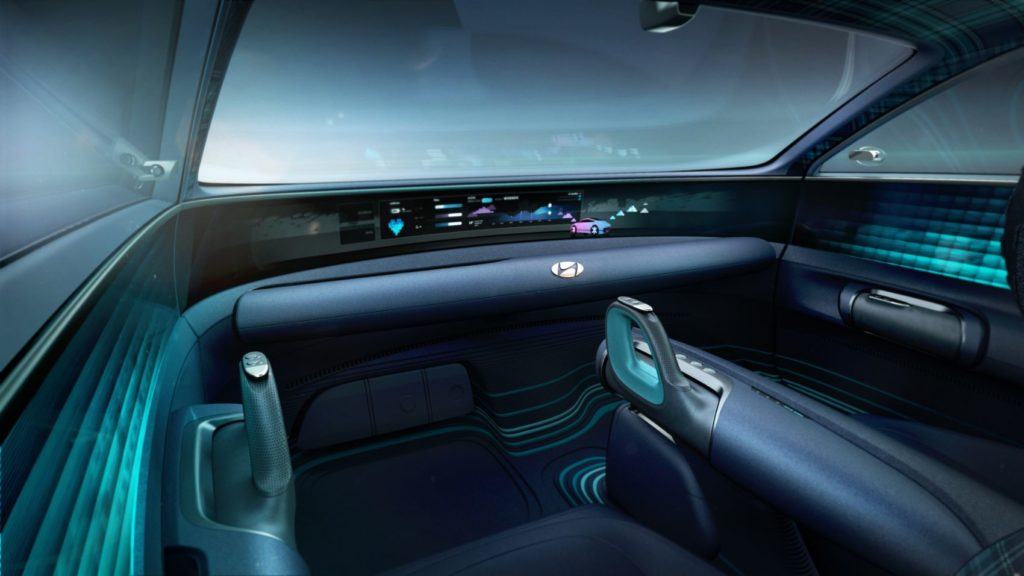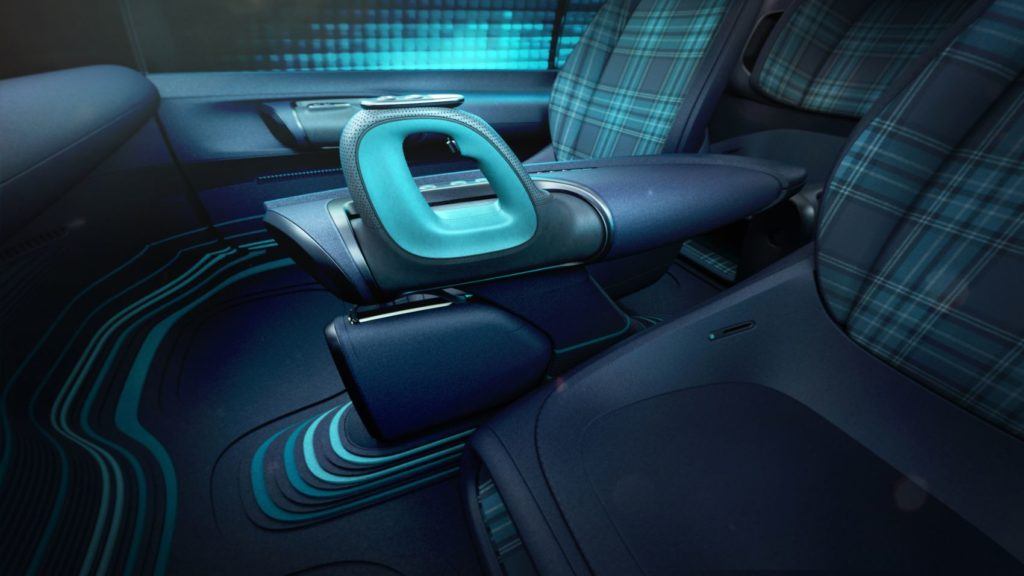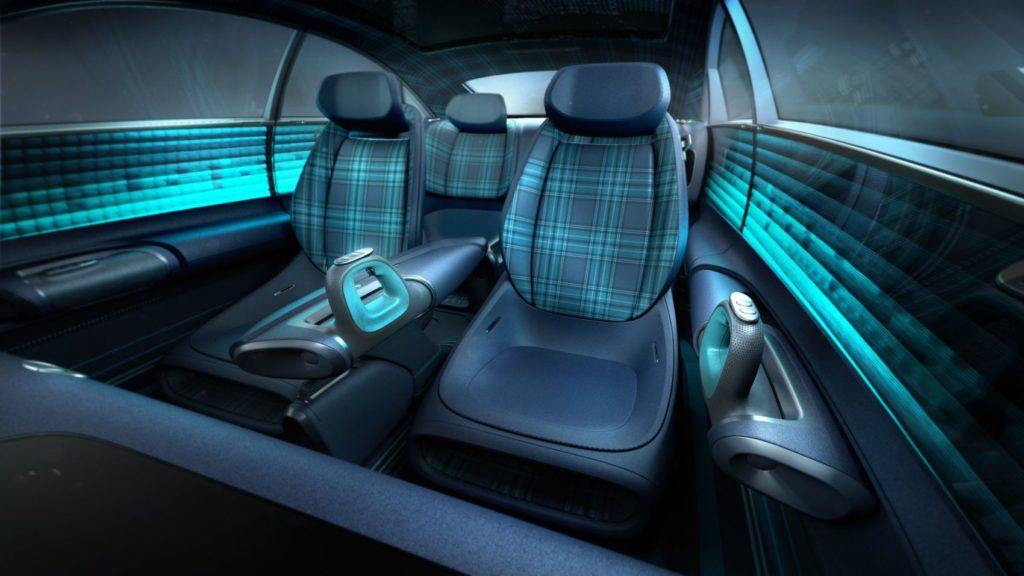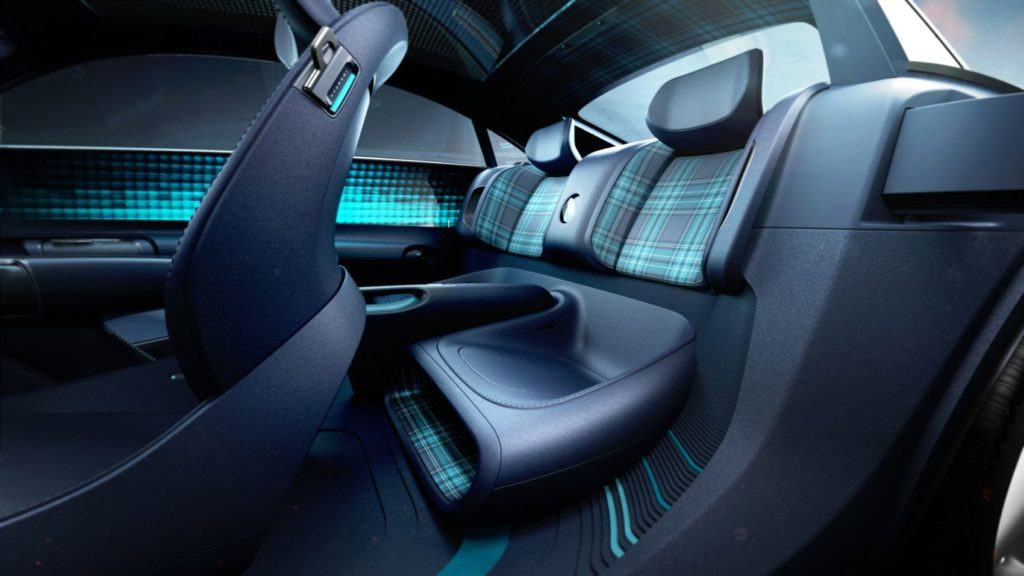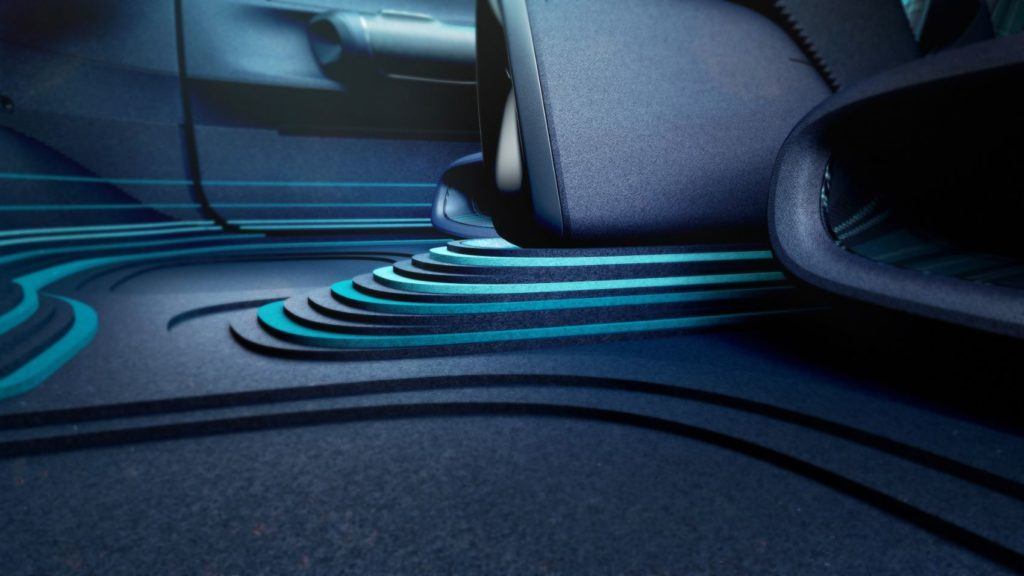- The Hyundai Prophecy employs a design language called Optimistic Futurism.
- Design elements throughout the vehicle were inspired by water in nature.
- Instead of a steering wheel, the Hyundai Prophecy uses joysticks to move.
Every automaker has a “design language,” which is exactly what it sounds like. It’s a series of identifying characteristics, specific to that brand, woven into their styling and design. You might notice how vehicles of a given automaker look a “certain way.” That’s on purpose. And Hyundai’s Sensuous Sportiness is one of the best examples of this. The next phase of this design language was recently unveiled in the Prophecy Concept EV.
What Is Sensuous Sportiness?
The idea originated in Hyundai’s Le Fil Rouge concept in 2018 during the Geneva International Motor Show. The concept, with its Sensuous Sportiness design language, centered on four different but distinct traits: proportion, architecture, styling, and technology. The idea (in a nut shell) is to create a car that is aesthetically pleasing, but also one that invokes driver emotion.
Here’s something wild: Hyundai bases the Sensuous Sportiness styling on the Golden Ratio, a concept commonly found in mathematics.
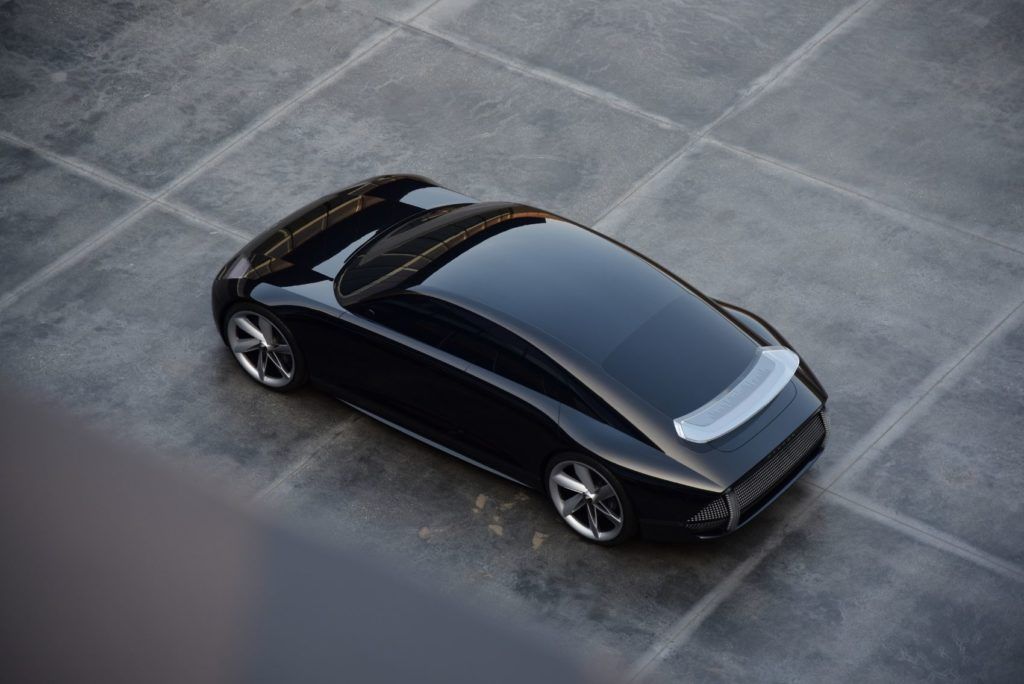
What Is The Prophecy EV?
The Prophecy is an electrified and autonomous concept from Hyundai, and the next variation of the Sensuous Sportiness design language. It shares similar characteristics with the Le Fil Rouge, like the longer wheelbase and shorter overhangs. However, Hyundai says the Prophecy’s unique EV architecture allows them to go a step farther with the Sensuous Sportiness theme.
“We have brought to life yet another icon that establishes a new standard for the EV segment as well as pushing Hyundai’s design vision to even broader horizons,” explained SangYup Lee, Head of Hyundai Global Design Center. “A part of that expansion is what we call Optimistic Futurism, a design concept embodied by Prophecy.”
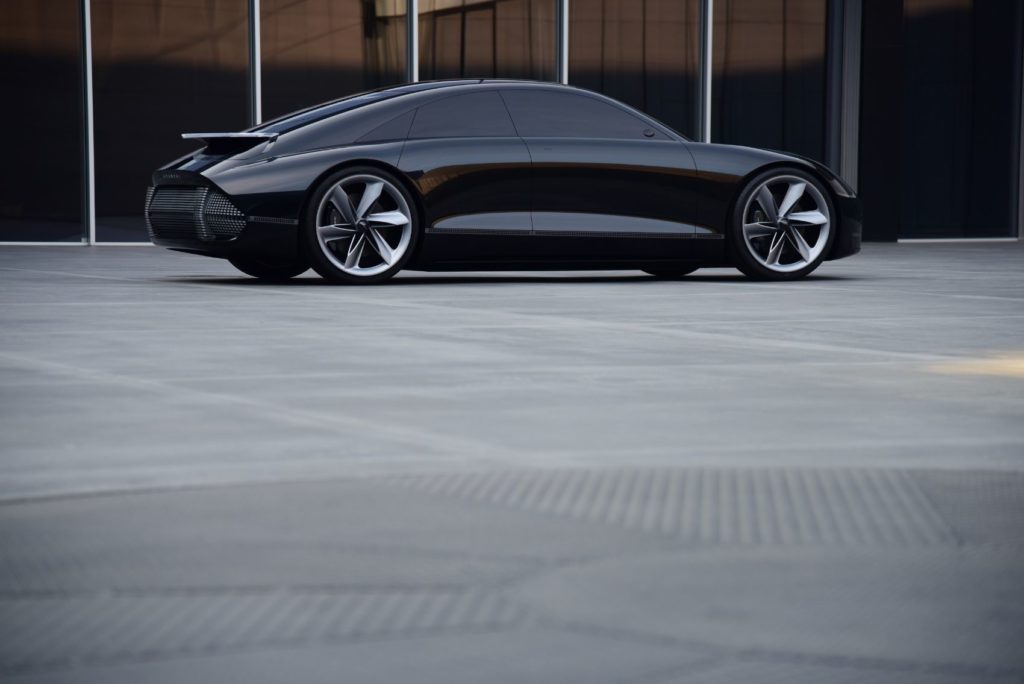
Hyundai Prophecy EV: Exterior Styling
Hallmarks of this Optimistic Futurism design are seen readily in the Prophecy’s side profile. Hyundai says they went for a “weathered stone” look with a “clean and simple” cut that extends from front to back. The rear quarter panels employ a boat-tail line to help give the vehicle a sense of motion, even when sitting.
Hyundai says we will see the Prophecy’s pixel lamp lights in future models.
Functional Design Language
The Hyundai Prophecy looks futuristic, but it goes beyond just that. As an EV, aerodynamics are paramount to increasing performance and overall efficiency – and the Hyundai Prophecy is no exception. With the Prophecy, air is meant to be drawn in, then flow down the side of the body; Hyundai uses the analogy of water moving over a stone.
Below the front bumper is an air intake to help cool the batteries, while a rear spoiler increases downforce.
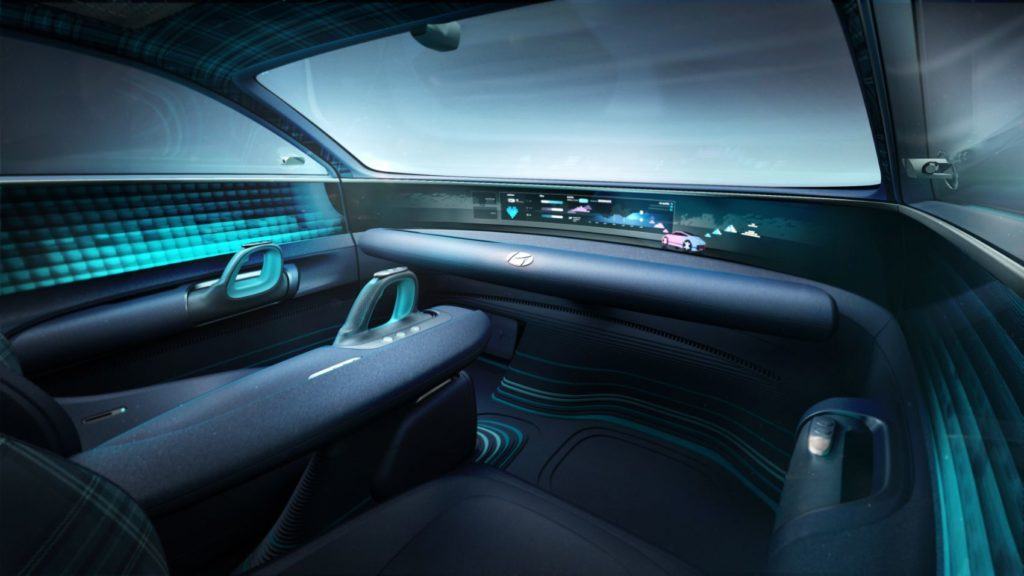
Hyundai Prophecy EV: Interior Treatments
Designers used the Prophecy’s longer wheelbase to maximize interior space, or rather, “lifestyle space” as Hyundai calls it. Using eco-friendly materials, ambient lighting, and an overall minimalist approach, Hyundai wants occupants to feel a sense of warmth once inside. “With Optimistic Futurism, our aim is to forge an emotional connection between humans and automobiles,” Lee added.
External intakes placed at the bottom of the side doors provide purified air inside the vehicle. In addition, the treated air is circulated back out as clean air. Like the exterior and the water over stone example, movement of air inside the cabin was also inspired by water in nature.
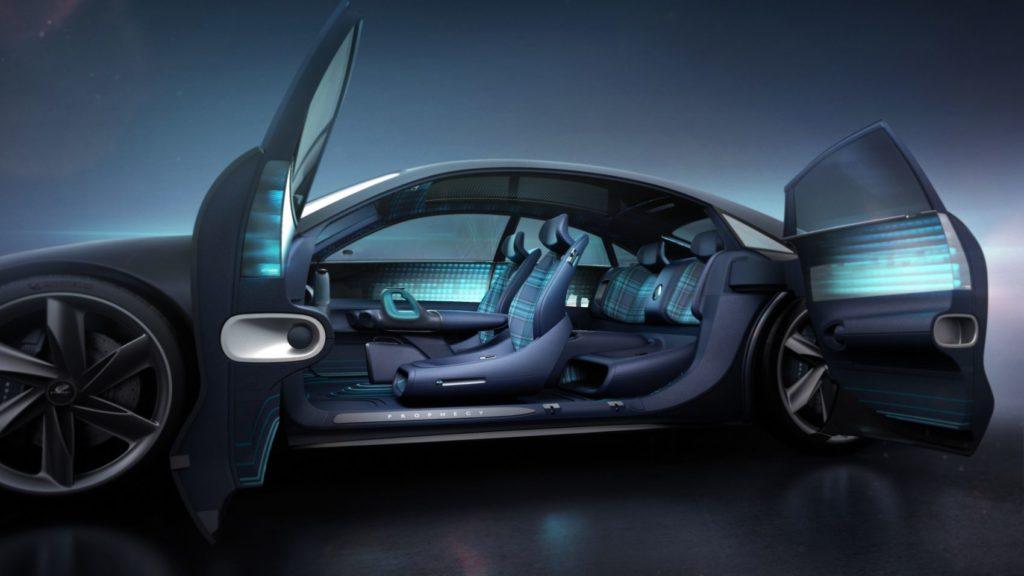
No Steering Wheel
In lieu of a steering wheel, joysticks control the Hyundai Prophecy. Two joysticks allow for left and right operating controls, while other joysticks are placed throughout the vehicle to handle other functions. Hyundai says these changes offer more “visual freedom” for occupants, although we do wonder what it would be like to drive every day with joysticks.
Will We Ever See The Hyundai Prophecy?
In some ways, yes. The design elements here will eventually percolate through Hyundai’s lineup. As the Prophecy is a concept, we probably won’t see it on the road like this exactly. However, in terms of body styling alone, we could see the Prophecy lending itself nicely to a future Genesis model.
Carl Anthony is Managing Editor of Automoblog and a member of the Midwest Automotive Media Association and the Society of Automotive Historians. He serves on the board of directors for the Ally Jolie Baldwin Foundation, is a past president of Detroit Working Writers, and a loyal Detroit Lions fan.
Hyundai Prophecy Gallery
Photos & Source: Hyundai Motor Company.

